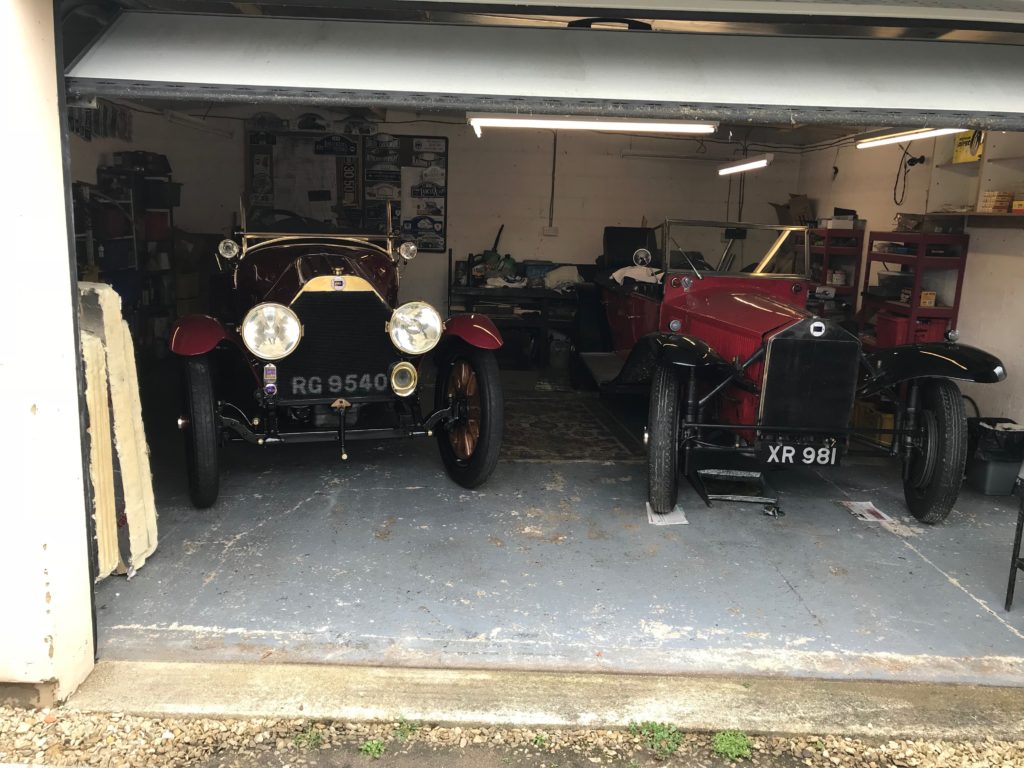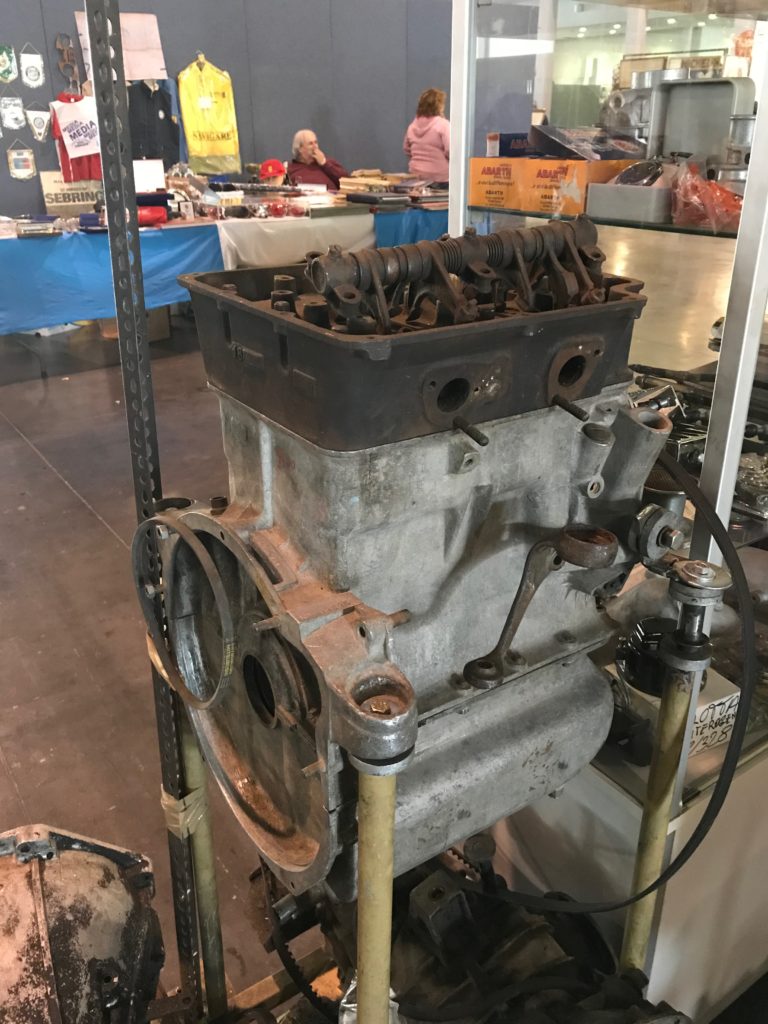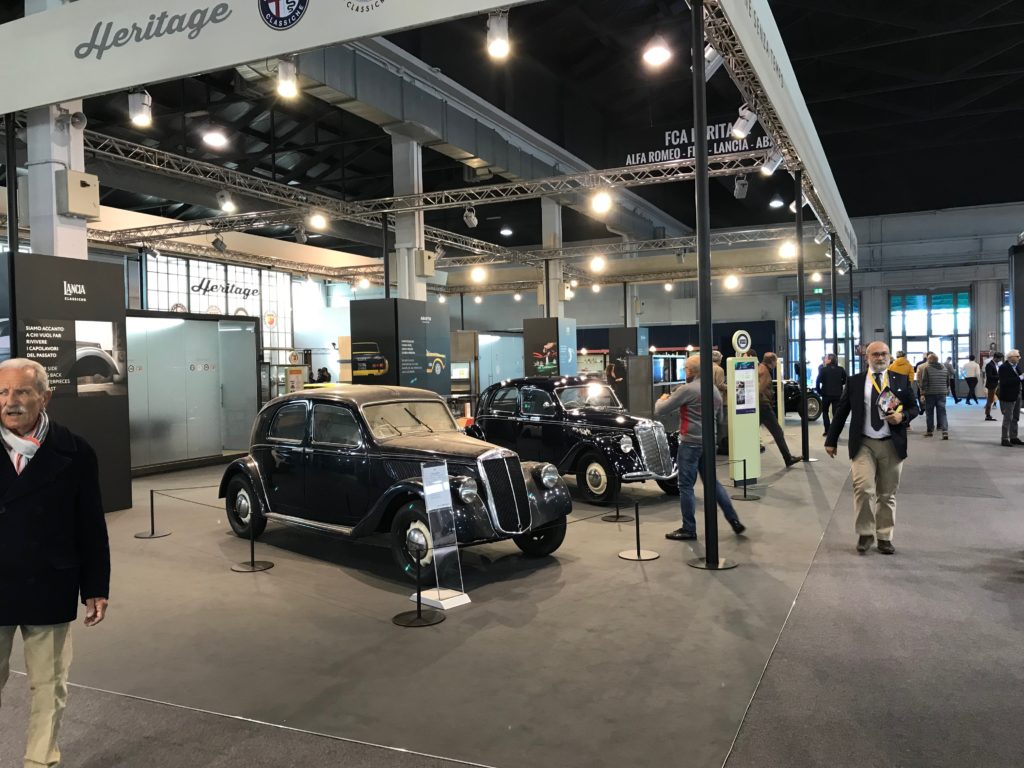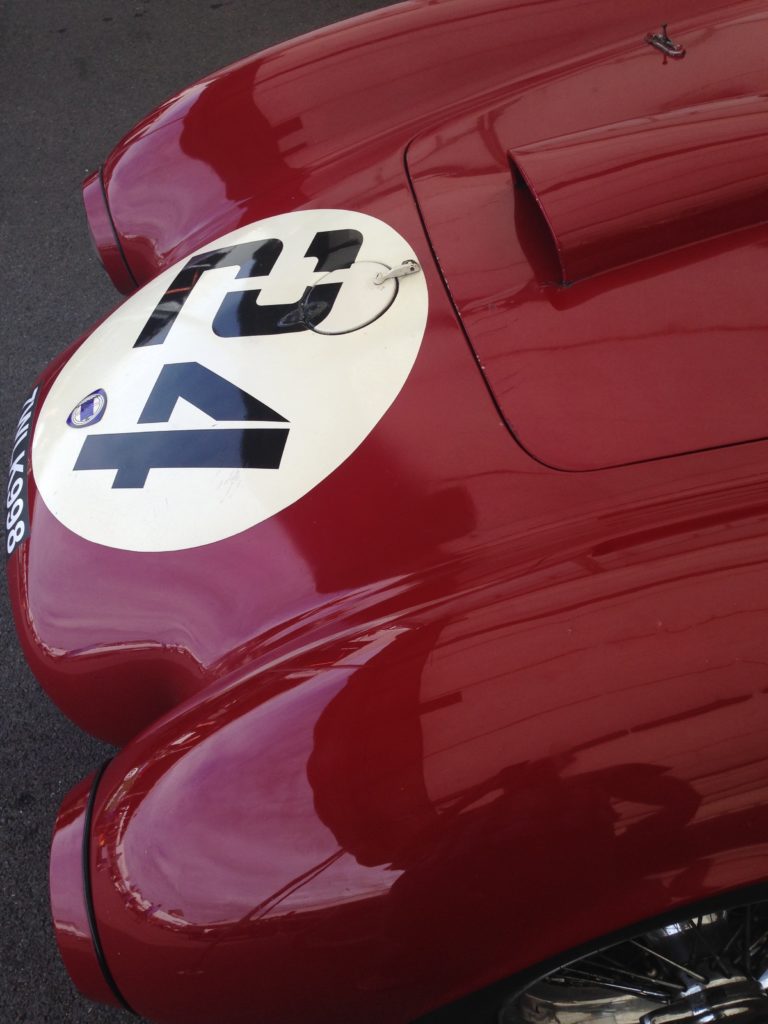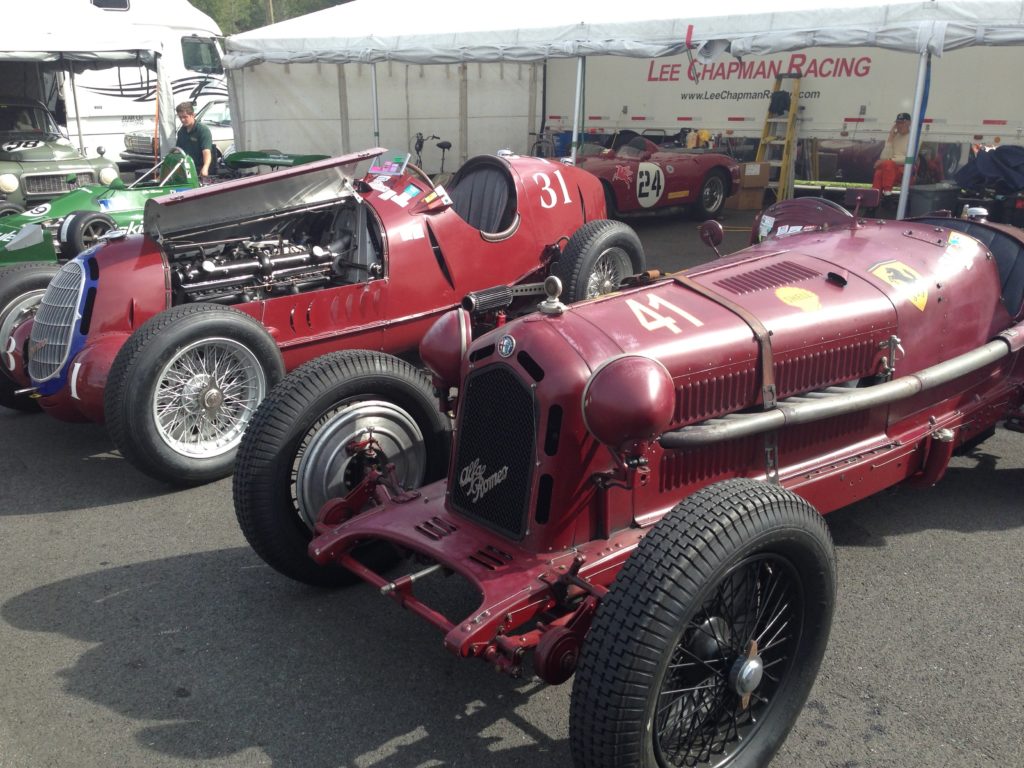Archive for the ‘Uncategorized’ Category
Lancia 1Z(m)
One of Lancia’s early military vehicles was the 1Z Autoblinda. Its history has been somewhat obscure. What was it, when was it made, and what was unique about it? Its seems the Autoblinda 1Z was based on the Lancia 1Z truck, c. 1915. The information is murky, but on one factory sheet, its called the 1Z(m), likely for militare. That seems like a pretty good designation. The 1Z(m) had a Theta engine and chassis, bodied by Ansaldo in Genova. Its never been clear how many were made, but a visit to Wiki (France) gives a lot of information, with the following information translated largely from their site. It says that the 1Z(m) was used into the late 1930s, and there is a picture on the web of one as 1943. For what its worth, the information looks good, and might even be true. So here we go…..
(NOTE 6.8.2020 – some of the information outlined below has been corrected in the Comments section. Please review that information).
______________
History
After the Italian-Turkish war of 1910, during the short period of neutrality before the outbreak of the First World War, in 1914 Regio Esercito commissioned Ansaldo to study an armored vehicle, a major novelty in the the time when the infantrymen were still attacking enemy troops with only one rifle in their hands. The engineer Guido Corni, an expert in mechanics and metallurgy at Ansaldo, presented a project based on the chassis of the Lancia 35 HP (ed. note: the Theta was a 35HP chassis) as the basis for the “1Z(m)” armored vehicle.
Prototype
The Ansaldo Lancia 1Z(m) prototype, consisting of two superimposed turrets armed with “Maxim 1906” 6.8 mm machine guns, was presented to the Italian military authorities on April 17, 1915. After conclusive tests on May 7, the Regio Esercito – King’s Army from Italy – placed an order of 20, which differs slightly from the prototype at the bonnet. The originality of this vehicle lay in its two superimposed turrets, which can turn in a single block or separately. The lower turret or dome had two machine guns and the upper one the third.
Production
The first Lancia 1Z(m) armored car was delivered to General Cadorna in August 1915 in Udine, the remaining 19 following in the spring of 1916. Three squadrons of these armored carriages were formally established in July 1916. The judgments issued at the time were positive about motorization and protection, but regretted difficulties to back down (reverse?). The vehicle also seemed heavy and cumbersome. This defect was solved later with Fiat 611 model. A second batch of 17 units was ordered in March 1917, differentiated by replacing the front wheel shielding by simple mudguards and the addition of a front radiator protection. This order brought to 37 the number of copies of the first series delivered in 1917.
The version was also called the Lancia 1ZM
After the initial period of real use on the front, Italy already having entered the war in 1915, the vehicle appeared to be too unbalanced because of its height. It is then decided to have only one turret and to place the 3rd machine gun at the bow of the vehicle. This is how the second series of the Lancia armored car was developed, and some gave it the name of 1ZM (although factory info also has 1Z(m)). In order to improve its firepower, it was also decided to replace Maxim’s 6.8mm machine guns with St Etienne 907F 8mm machine guns. This choice was particularly unfortunate, the French weapons having a tendency to jam, which could only create problems. Moreover, they could not work when the vehicle was moving, and were quickly replaced by Fiat-Revelli M 1914, much more reliable.
(From another Wiki site, we have more information on the second series:
“The Lancia 1ZM was the second batch of Ansaldo-Lancia armoured cars built. 110 cars of the improved model were ordered in 1917 and all were delivered before the end of 1918. Sometimes difficult to identify from the original Lancia 1Z (“Model 1916”), the most obvious difference is the removal of the top machine gun turret. This left the 1ZM with just the one larger, twin machine gun turret. Other features that will help are that the first 1ZM’s usually have two spare tyres mounted on the right side of the vehicle (on the 1Z they were under the rear). The cooling vents and front armour of the engine compartment are slightly different and there are fewer vision ports in the armoured crew compartment. The front bumpers were also simplified. However, some of the original 1Z series were modified to initial 1ZM standard by the removal of the extra top turret and up-dating the chassis. This makes it possible to find photos of 1ZM armoured cars with both 1Z and 1ZM features. American troops on the Italian Front during World War I trained with and used some of these vehicles.” )
Returning to the French Wiki:
35 “Lancia 1ZM” of the third series, were first ordered in November 1917, but then increased to 100 copies in January 1918. This version had only one turret armed with two 8mm machine guns. The third weapon fired through a rectangular opening at the rear. A total of 113 copies of the “Lancia 1ZM” 3rd series model were produced. During the 1920s, the Lancia 1Z machine guns were all replaced by Fiat mod.14 of 6.5mm. In 1935, the replacement of the original wheels with wheels with low pressure tires began for the colonial models.
The version Lancia 1Z colonial
The Fiat-Revelli M 1914 machine guns had water cooling, which was a problem in the hot desert regions. For this reason, all the armored carriages for the Italian colonies of East Africa were equipped with air-cooled 8mm Fiat-Revelli M 1935 machine guns. The copy given to Afghanistan was equipped with air-cooled SIAM 1918 light machine guns.
Technical sheet
- Length: 5.40 m
- Width: 1.80 m
- Height: 2.40 m
- Engine: Lancia 1Z, 4 cylinders of 4 960 cm³, developing 60 hp
- Mass: 5.4 tons
- Crew: 6
- Maximum speed: 70 km / h on the road
- Autonomy: 200 km
- Protection: 6.5 mm
- Weaponry: three Fiat mod.14 6.5 mm machine guns (15,000 rounds)
- Note: A special version was made to order for the Austrian army with Schwarzelose machine guns, the exact number unknown.
______________
So…. if the articles are to be believed, we have the following production numbers for a total of 260 examples of the 1Z(m) or 1ZM:
- 20 of the first series 1915-1916
- 17 of the first series 1917
- 110 of the second series, 1917-1918
- 113 third series, 1918
Video!
And if this isn’t enough – from Luigi De Virgilio comes a link to a video with 1Z(m) in motion. Amazing…. start at 2′ 15″ (added 3.2020):
https://www.youtube.com/watch?v=07cNGjDwCKs&t=193s
And where they ended up:
Found in (all places) Afghanistan, was a 1Z(m). With information from Frank Tierney on the LMC website, this was likely the 1Z given to the King of Afghanistan in 1928, and was on a military base called Camp Warehouse, near Kabul until 2007 when it was moved to the military museum in Dresden. More info can be found here:
https://www.lancia.myzen.co.uk/forum/index.php?topic=11750.0
Colors revisited
There is continued interest in original Lancia colors. Earlier blog posts have identified the Lechler and Glasurit colors, and the difficulties with getting original Lancia use of Max Meyer paints into the current paints available.
I’ve not been active in this for some time. Perhaps someone has found a way to go from the Max Meyer paint codes to the newer systems – Paul Mayo has been working on a master list. Listed here are a few of the linkages, examples and samples that have been accumulated over the years. Perhaps this is helpful.
- a collection of Max Meyer paint chips, and their numbers, from the period 1960-1980.
- a listing of Max Meyer color formulas, taken from a booklet of theirs c. 1969. This can be used for “mix your own” Meyer paints, if one finds a good enough paint shop.
- a list of Max Meyer paints listing the models that used them, and cross indexed as much as possible to other paints. Its a start.
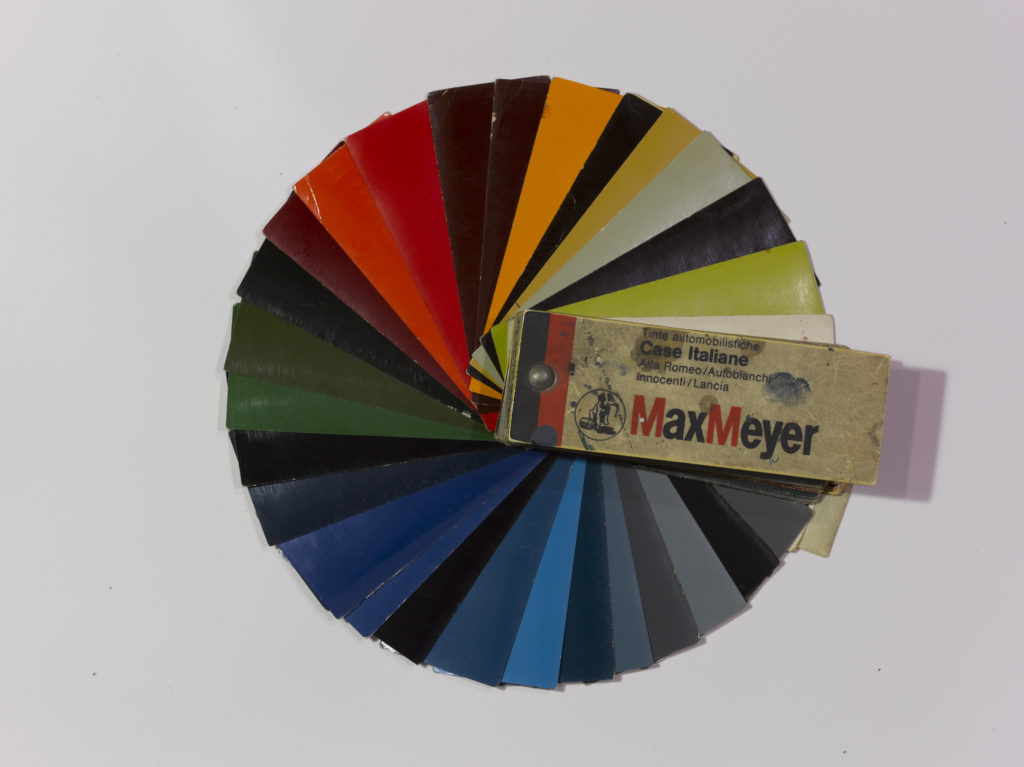
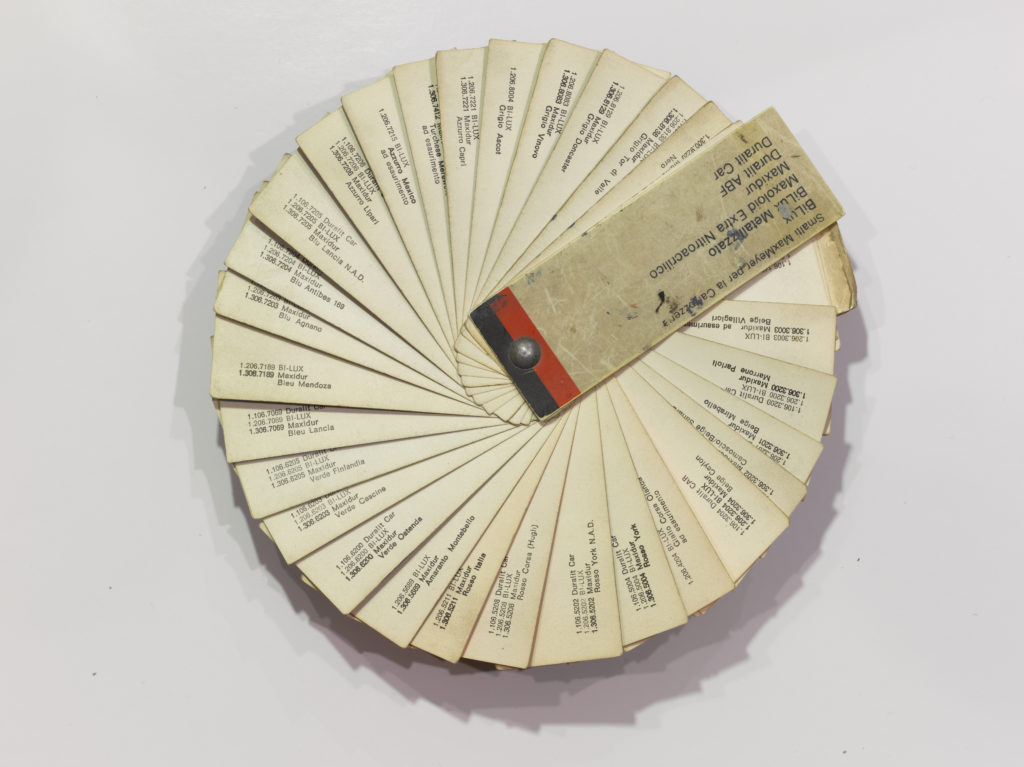
Theta running
Seeing early pre-Lambda Lancias is rare. Hearing one run even moreso. Here is Roland Grazebrook, with his Theta, from about 1916…. and he’s starting it up. Nigel Trow is regarding watchfully from the doorway.
These early cars are really massive, and quite striking. More later.
Looking back – Ferrari
In early 2018, there was a show of Ferrari history at London’s Design Museum. In the city briefly, I was at the Science Museum, to see the redone mathematics and calculation exhibit by Zaha Hadid. It was quite lovely, but I missed the older display, as it had many alternate stories, instead of one being pushed for the new audiences (= youth) in the new display. With some time left, went to the Design Museum to see this Ferrari show. It had good reviews, but so much of the hype around Ferrari is distorted. I mean, yet another and how good could it be?
It turns out, very good. Remarkably so. It focused not so much on the glory as is so often the case but rather on a thoughtful investigation into the magic of making. On display was much historical material, especially treasures from the very early years. A video of how to work the model of a body during design, going between drawing and full-size clay model, both analog and digital methodologies. A whole display case on castings and fabrications. A wall of brochures, another of the Ferrari colors. Full-size bucks. In short, a designer’s approach to their history. I was overwhelmed and short of time, and had to run to take shots of all that was interesting. One could have spent a day there.

The graphic image of Ferrari. Often seen, rarely examined. Here is the eraly work, used to make that image stronger and clearer.
For something as design-centric as Ferrari, both the product and the brand, its an approach to telling its story that one rarely sees anywhere, and not in America at all. A few shots are attached for some of this show. All in all, the show gave hope that design and the car need not always fall prey to the whims of the promotional department, as is often the case. And that as we get deeper into the issues of the car, there are others interested in the story behind the scenes. For more info, see: https://designmuseum.org/exhibitions/touring-exhibitions/exhibitions-for-hire/ferrari-under-the-skin-touring-exhibition

video of the design effort with the car in front. The video emphasized the need to iterate, go back and forth between the different techniques, to get it right. They explained the process very clearly and made clear that the extra step to get it “right” is quite expensive, requiring tooling, drawing, and staff all to be on hand at the same time. Interesting viewpoint and explanation.
Oldest Lancias
Recently been learning about the pre-Lambda Lancias. Several friends have been patiently helping , most notably Roland Grazebrook in England, who has been involved with the early cars for over 30 years.
A recent visit to England/Wales involved a ride in a 1917 Theta, learning about the early Lancia-designed and made carburetors, and seeing likely the only Zeta engine in existence, the leftover of this most unusual car made c. 1912.
Also to be unravelled is the story of the SGV cars. There are a couple in a museum outside of Philadelphia (any volunteers for a photo trip?). Made of Lancia components, c. 1910-12, but marketed in the US, their story is still a bit unclear, but they are an early example of Lancia’s expansive outlook, outside of Italy. In fact, that story involves not only early distribution in the US (from 1908) but the likely publication the first Lancia road test in England in 1907, just as the company began making cars. Lancia was fully interested in the international markets from the very beginning.
For now, work is focusing on identifying the development path for these early cars, the aero engines, and extensive patent work, all which lead up to the Lambda breakthrough in 1922. Its a story full of many twists and turns, but when seen all together, reveals a mind exploring in several directions in a very short time. The amount of innovation and exploration at Lancia (from 1907-1915) makes the head spin. Its sets the tone for the company, and makes the constant changes in the 1950s simply a part of this ongoing family story.
So please bear with this dive into early history. Long term plans are to integrate this with a larger overview of the developments in Lancia engineering over their first 60 years.
1967 Technical Presentation
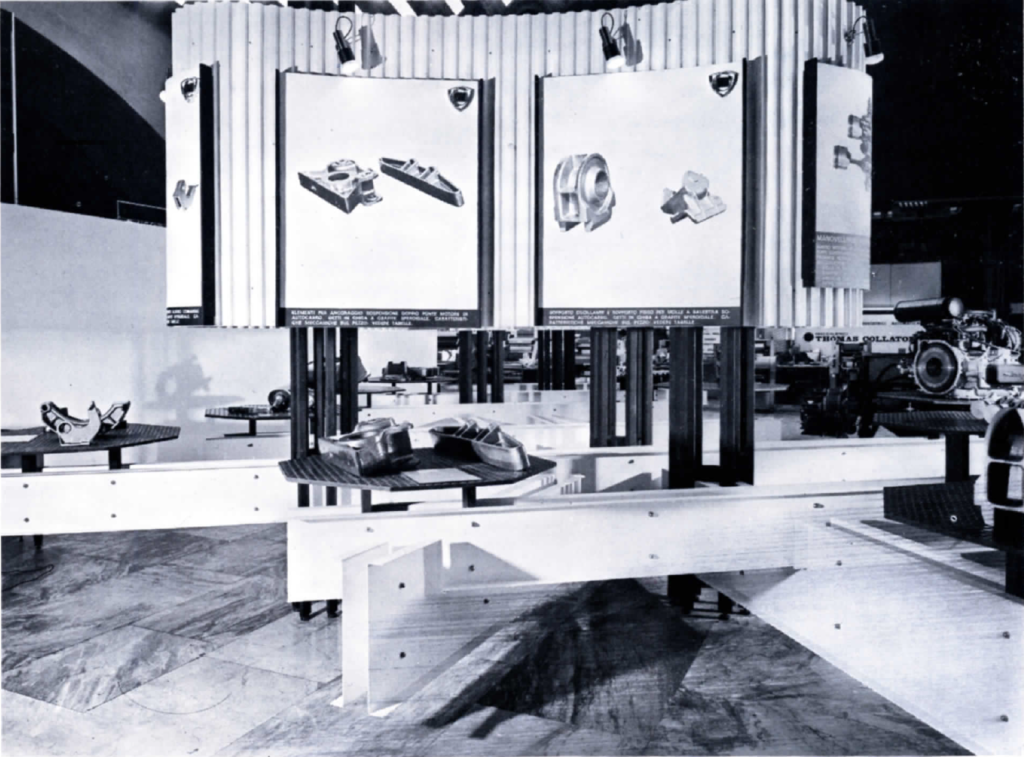 In 1967 – Lancia participated in the 17th Salone della Tecnica, showing off bits of Flavias and Fulvia, castings and fabrications, all on top of a funky grid of steel or alum girders with big image displays in the background. Gives one a sense of the times….
In 1967 – Lancia participated in the 17th Salone della Tecnica, showing off bits of Flavias and Fulvia, castings and fabrications, all on top of a funky grid of steel or alum girders with big image displays in the background. Gives one a sense of the times….
from Lancia Rivista 22/23, fall of 1967.
Lancia bits in Padova
A recent visit to the Fiera in Padova extends the Lancia knowledge yet further. There were several things of interest:
- FCA Heritage had a restored Aprilia at their site – nice!
- There was a wonderful pair of Flaminias at the Zagato stand
- Nice to see an Aprilia engine and parts for sale.
- Was able to discuss Ardea details (s.1-s.4) with members of the Ardea registry, who know their stuff.
- A new Stratos chassis being remade in Prague.
- On guy making new 1.6 Fulvia engines, with stock performance on a new block. The work was magnificent.
Lots to see!

Very interesting motor mount for Aprilia, also for Artena and Ardea. Works in two different ways, per the 1932 Lancia patent. Brilliant!

Stratos chassis from Prague. The saleswoman was quite well informed – a very impressive display overall, with three different chassis and complete specs.
Vintage cars at Lime Rock, Connecticut
Labor Day weekend is Vintage Festival at Lime Rock, Connecticut. Its an old track, tucked into the NW corner of Connecticut, just few hours from New York and Boston. I first visited about 35 years ago while in graduate school in Boston. Its been a long time favorite, with all kinds of cars coming out of the garages of the northeast and New York areas. This year only a brief visit, but got to say hello to Santo Spadaro and his brother (from NY), the Kristicks (racing their Fulvia Sport), and the Steermans. There was also an 8C Alfa and a D24, and some other significant Italian machinery.
Rally video – Stratos, Delta S4, 037
Chris Harris, a British motoring journalist, spent an afternoon north of San Remo, at a Pirelli event introducing their Pirelli P7 Rally Corsa Classic tires. There he went out in a Stratos, Delta S4 and an 037 Lancia, and with Markku Alen as well. All were totally amazing. This is a wonderful rally video, especially because it shows our beloved Lancias at a reasonably intense clip, and is quite accessible and tangible.
Borgeson, Lincolns, and friendship
Car friends are good friends. Most are loyal, they share similar interests, which is not so much the cars themselves, but for the insights gained. Our fondness for complicated industrial products that move and make noise allows us to see the world and find treasures in ways and places we wouldn’t normally look. And surprises happen.
Many years ago, the famed historian Griff Borgeson wrote of his student years in the Bay area and of a very special set of friends he had at the time. Its one of my favorite pieces, and for those of you published Thoroughbred and Classic Cars in 1979.

















